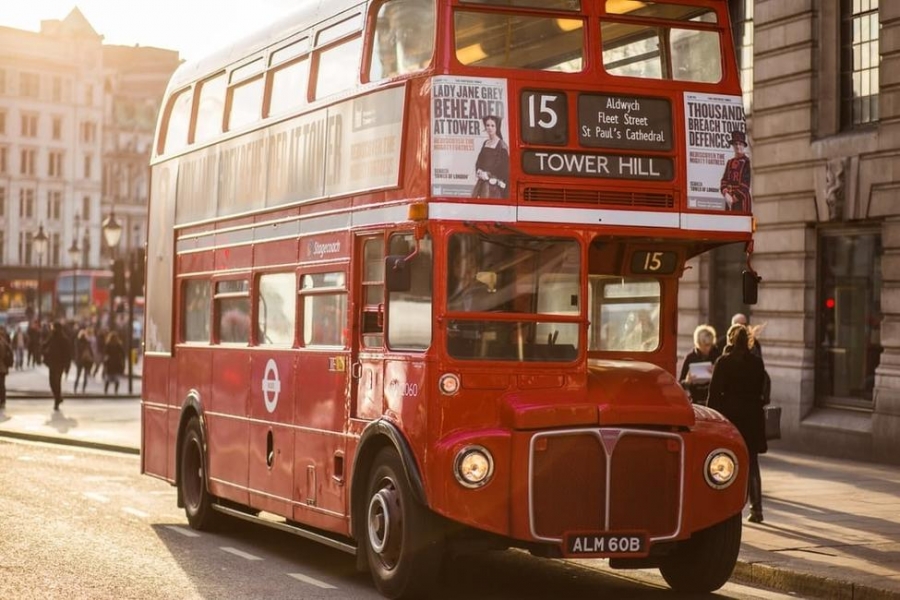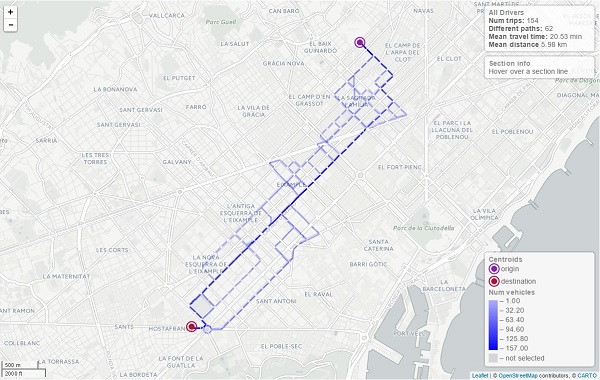Analytics Tools and Services for the Assessment of Innovative Mobility Concepts, Vehicles and City Policies.

City Polices & Measures
Analyse the impact of potential changes in city infrastructure or in some specific areas like main streets (e.g. speed limit limitations or other regulations, usage of bus and taxi lanes by EVLs, etc.).
Read more[/column][column cols=”4″]
Mobility Concepts
Evaluate the impact of the combination of mobility services (e.g. ridesharing services, large parking or park-and-ride areas, etc.) to facilitate the mobility in congested urban areas (last mile mobility).
Read more[/column][column end=”1″ cols=”4″]
Innovative Vehicles
Analyse the impact on KPI (e.g. congestion, emissions, energy consumption, etc.) of increasing the usage or penetration rate of innovative vehicles and the combined effect of different types of vehicles.
Read more[/column]
City Policies & Measures
[column begin=”1″ cols=”6″]
City Impact Analysis
Assessment and quantitative evaluation of deployment strategies impacts of mobility concepts, innovative vehicle and city policies on KPI’s of the transport at city.
Impact analysis at City level: (i.e. fuel consumption, CO2 and NOx emissions, etc.)
Impact analysis at Street level: (i.e. queue length at junctions, level of service)
User/Drivers perspective: (i.e.travel times, speed)[/column][column end=”1″ cols=”6″] [/column]
[/column]
Mobility Concepts
[column begin=”1″ cols=”6″] [/column][column end=”1″ cols=”6″]
[/column][column end=”1″ cols=”6″]
Mobility patterns
Visualization and analysis of the mobility patterns (origins and destinations of the trips).
Generation (in an origin): number of trips leaving a transportation zone (TAZ) by vehicle type and time slot.
Attraction (in a destination): number of trips arriving at a transportation zone (TAZ) by vehicle type and time slot.
Trips: vehicles travelling between pairs of origins and destinations (OD pairs).[/column]
[column begin=”1″ cols=”6″]
Ridesharing Services
Evaluation of the impact, benefits, limitations, design parameters and level of service for sharing services, commercial fleets and public fleets.[/column][column end=”1″ cols=”6″] [/column]
[/column]
Innovative Vehicles
[column begin=”1″ cols=”6″] [/column][column end=”1″ cols=”6″]
[/column][column end=”1″ cols=”6″]
Navigation Strategies
Comparison between different navigation strategies taking advantage of the dynamic routing algorithms and analysing the impact on different groups of users (e.g, tourists, regular users and expert drivers as taxi drivers).[/column]
[column begin=”1″ cols=”6″]
Connected Vehicles
Urban traffic current state estimation based on connected car data (probe vehicle data supporting V2I and V2V) and evaluation of the impact from increasing this data usage over the city.[/column][column end=”1″ cols=”6″] [/column]
[/column]
[column begin=”1″ cols=”6″] [/column][column end=”1″ cols=”6″]
[/column][column end=”1″ cols=”6″]
E-Vehicles, E-Bikes, Last Mile Devices, …
Emulation of different types of vehicle (e.g., electric vehicles, light vehicles to be used for short distances as last mile transportation after parking) to evaluate the improvement in the emissions degree and driving behaviors.[/column]